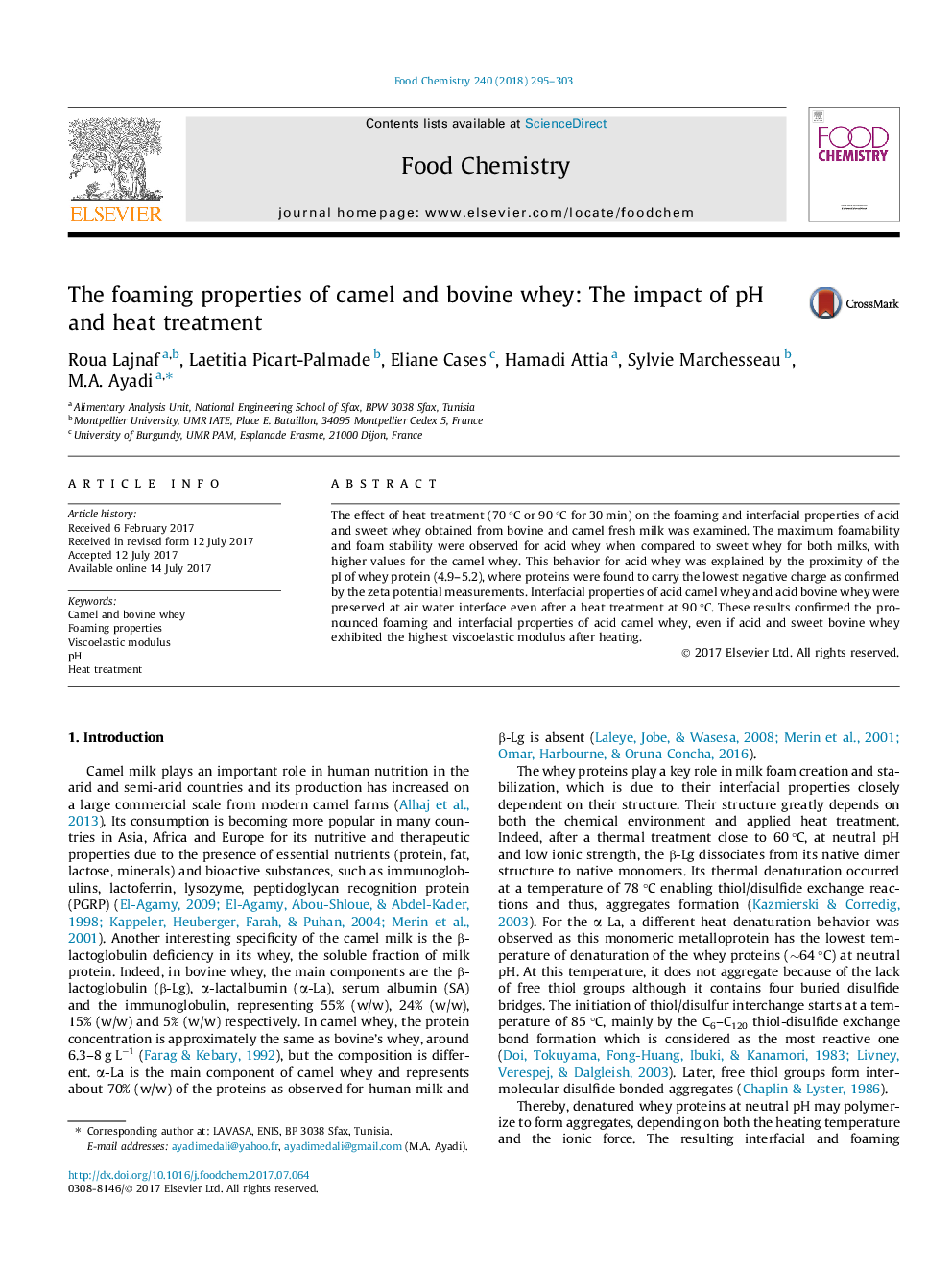| Article ID | Journal | Published Year | Pages | File Type |
|---|---|---|---|---|
| 5132465 | Food Chemistry | 2018 | 9 Pages |
â¢Foaming properties of camel and bovine wheys were studied.â¢Camel and bovine whey foamability was greatly affected by pH and temperature.â¢Acid camel and bovine wheys where found to foam better relative to sweet.â¢The maximum foamability and foam stability were observed for acid camel whey.â¢Camel and bovine wheys foams were more stable after heat treatment at 70 °C and 90 °C.
The effect of heat treatment (70 °C or 90 °C for 30 min) on the foaming and interfacial properties of acid and sweet whey obtained from bovine and camel fresh milk was examined. The maximum foamability and foam stability were observed for acid whey when compared to sweet whey for both milks, with higher values for the camel whey. This behavior for acid whey was explained by the proximity of the pI of whey protein (4.9-5.2), where proteins were found to carry the lowest negative charge as confirmed by the zeta potential measurements. Interfacial properties of acid camel whey and acid bovine whey were preserved at air water interface even after a heat treatment at 90 °C. These results confirmed the pronounced foaming and interfacial properties of acid camel whey, even if acid and sweet bovine whey exhibited the highest viscoelastic modulus after heating.
